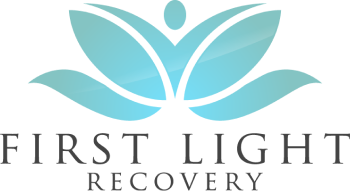Benefits of Cognitive Behavioral Therapy
Cognitive Behavioral Therapy (CBT) is a pivotal approach for many seeking to improve their mental well-being. By understanding how CBT operates and its effectiveness, we can better appreciate its role in managing thought disorders.
Understanding CBT Principles
CBT focuses on the relationship between thoughts, feelings, and behaviors. It helps individuals become aware of how their thinking patterns influence their emotional responses and actions. This understanding is foundational, as it allows individuals to address their challenges more clearly and respond effectively. The main objective is to challenge unhelpful thoughts, fostering positive changes in one’s overall quality of life (Mayo Clinic).
CBT is structured around a limited number of sessions, typically including exercises or “homework” that reinforce learned skills. This efficient approach often leads to quicker results compared to other therapy forms. It is employed not only for diagnosed mental health conditions but also as a tool to manage stressful life situations (Mayo Clinic).
Effectiveness and Applications of CBT
Research has consistently shown that CBT is effective in treating a wide variety of mental health concerns, including depression, anxiety, PTSD, and eating disorders. It is also beneficial for those without a diagnosed condition who are navigating everyday stress. The core effectiveness of CBT lies in its structured approach, enabling individuals to cope with specific challenges efficiently.
In treating anxiety disorders, for example, CBT has shown considerable success by equipping individuals with coping strategies tailored to their experiences. Here’s a breakdown of how CBT applies to different mental health conditions:
| Mental Health Condition | Benefits of CBT |
|---|---|
| Depression | Helps challenge negative thoughts, improving mood and perspective. |
| Anxiety | Teaches coping strategies for managing anxious feelings and situations. |
| PTSD | Aids in processing traumatic experiences, reducing symptoms. |
| Eating Disorders | Encourages healthier thought patterns around food and body image. |
CBT’s structured nature means fewer sessions are typically needed, making it a viable option for individuals looking to improve their mental health without long-term commitments. For those interested in understanding how CBT relates to specific disorders, we invite you to explore our links on understanding the spectrum of anxiety disorders: from generalized anxiety to OCD and the link between panic disorder and physical health: what you need to know.
By recognizing the principles and effectiveness of CBT, we empower ourselves and our loved ones to make informed decisions about mental health treatment. It is an essential tool for anyone looking to enhance their coping mechanisms and overall emotional well-being.
Process of Cognitive Behavioral Therapy
Cognitive Behavioral Therapy (CBT) is a structured, goal-oriented approach that focuses on modifying patterns of thinking and behavior. This therapeutic method is particularly effective in managing thought disorders. In this section, we will explore the vital components of CBT sessions and how we personalize treatment plans to meet individual needs.
Components of CBT Sessions
CBT sessions typically involve a collaborative approach where both the therapist and the patient actively engage in the therapeutic process. Key components include:
- Assessment: The therapist conducts an initial evaluation to understand the patient’s thoughts, feelings, and behaviors, as well as their specific challenges.
- Cognitive Restructuring: This involves identifying and challenging negative thought patterns. Patients learn to replace these automatic thoughts with more realistic and positive alternatives.
- Behavioral Techniques: Patients are taught skills and techniques to alter unhelpful behaviors. This may include practicing conversational skills in therapy sessions, which can then be applied in real-life social situations (Better Health Victoria).
- Homework Assignments: Patients often receive assignments to complete between sessions. These tasks are designed to reinforce the skills learned during therapy, allowing individuals to apply them in their daily lives.
The structured nature of CBT sessions makes them effective in addressing a variety of mental health issues, including anxiety and mood disorders.
Personalized Treatment Plans
At First Light Recovery, we believe in tailoring treatment plans to meet the unique needs of each individual. Personalization in CBT includes:
- Diagnosis-Based Protocols: Treatment protocols are developed based on the patient’s specific diagnosis and issues, ensuring that therapy targets the most relevant aspects of their mental health (NCBI).
- Goal Setting: Together with the therapist, patients set achievable goals for their therapy journey. These goals serve as a roadmap for the treatment process and provide motivation.
- Flexibility in Techniques: Depending on the individual’s progress and preferences, different cognitive-behavioral techniques may be utilized. This could include integrating skills from behavioral therapy to assist in developing more helpful behaviors.
- Ongoing Assessment: Regular evaluations allow for adjustments in the treatment plan, ensuring it continues to meet the patient’s evolving needs.
By focusing on personalized treatment plans, we can effectively support individuals in their journey toward better mental health. For further information on managing specific disorders, check out our articles on understanding the spectrum of anxiety disorders: from generalized anxiety to OCD and the link between panic disorder and physical health: what you need to know.
Mental Health Conditions Treated by CBT
Cognitive Behavioral Therapy (CBT) is a highly effective approach to managing and treating various mental health conditions. At First Light Recovery, we understand the profound impact that conditions like depression, anxiety, PTSD, and eating disorders can have on individuals, and we recognize how CBT can assist in navigating these challenges.
Depression and Anxiety
CBT has been proven effective in treating both depression and anxiety disorders. The therapy focuses on identifying and altering negative thought patterns that contribute to these conditions. By helping individuals develop more balanced thinking, CBT empowers them to respond to stressors more effectively.
Studies show that CBT significantly alleviates symptoms of depression and anxiety in a structured environment. With its emphasis on practical skills and strategies, we see our clients gain valuable tools to manage their emotions and reduce avoidant behaviors, making it easier to cope with daily challenges.
| Condition | Effectiveness of CBT |
|---|---|
| Depression | High |
| Generalized Anxiety Disorder | High |
| Social Anxiety | High |
| Panic Disorder | High |
For more insights into understanding different anxiety disorders, check out our article on understanding the spectrum of anxiety disorders: from generalized anxiety to ocd and our strategies for managing social anxiety in daily life through effective coping strategies for managing social anxiety in daily life.
PTSD and Eating Disorders
CBT serves as a valuable tool for treating Post-Traumatic Stress Disorder (PTSD) and eating disorders. In cases of PTSD, CBT involves gradually exposing individuals to their trauma-related memories and feelings in a safe environment, allowing them to process and confront their experiences. This method helps reduce PTSD symptoms such as flashbacks and severe anxiety.
Eating disorders, which often stem from complex emotional and psychological issues, can also be addressed through CBT. The therapy assists individuals in identifying distorted thinking patterns related to body image, diet, and food, promoting healthier attitudes and behaviors.
| Condition | Effectiveness of CBT |
|---|---|
| Post-Traumatic Stress Disorder | Moderate to High |
| Anorexia Nervosa | Moderate to High |
| Bulimia Nervosa | Moderate to High |
| Binge Eating Disorder | Moderate to High |
For additional resources on managing specific symptoms of anxiety or recognizing patterns in conditions such as OCD, explore our articles on navigating life with obsessive-compulsive disorder: treatment options and support and the link between panic disorder and physical health: what you need to know.
By knowing how cognitive behavioral therapy assists in managing thought disorders and emotional challenges, we can better understand its significance as an invaluable component of our mental health services at First Light Recovery.
Experience and Reactions in CBT
Engaging in Cognitive Behavioral Therapy (CBT) can elicit various emotional responses as individuals navigate their mental health journeys. Understanding these responses and managing associated challenges can enhance the effectiveness of therapy, making it a suitable choice for those seeking support.
Emotional Responses in Therapy
During CBT, individuals may experience a range of emotions, including relief, anxiety, frustration, or even sadness. These feelings are often part of the therapeutic process as clients confront their thoughts, beliefs, and behaviors. The cognitive approach in CBT helps individuals challenge negative thought patterns and replace them with more realistic and constructive thoughts (Better Health Victoria).
Sessions typically last about 60 minutes and may occur weekly over a period of 8 to 12 weeks. Each session can bring forth different emotions as individuals process their experiences and confront issues affecting their mental well-being (NCBI Bookshelf).
Understanding the emotional landscape can help individuals prepare for what to expect during therapy. Developing coping mechanisms, such as deep breathing or journaling, can aid in managing emotional turbulence that arises during sessions.
Managing Challenges in CBT
As with any therapeutic journey, participants may encounter challenges while engaging in CBT. These challenges can include feelings of discomfort, resistance to change, or difficulty in expressing emotions. It’s important to recognize that these obstacles are normal and often a sign of progress rather than a setback.
One approach to managing these challenges is maintaining open communication with the therapist. Discussing feelings and concerns can facilitate adjustments in treatment plans, ensuring the therapy aligns with individual needs. Additionally, integrating techniques such as cognitive restructuring can help individuals better navigate their thought processes and overcome hurdles (NCBI Bookshelf).
Here’s a brief table outlining common challenges experienced in CBT and potential strategies to manage them:
| Challenge | Management Strategy |
|---|---|
| Emotional discomfort | Practice mindfulness techniques before and during sessions. |
| Resistance to change | Focus on incremental goals; celebrate small successes. |
| Difficulty expressing emotions | Use journaling as a tool to articulate thoughts prior to sessions. |
At First Light Recovery, we prioritize creating a supportive environment that addresses these challenges. We offer tailored treatment plans designed to ensure individuals feel empowered and equipped to manage their mental health effectively. Whether you or a loved one are dealing with anxiety, depression, or other thought disorders, our team is dedicated to providing the highest quality of care. For more information on how cognitive behavioral therapy assists in managing thought disorders, explore our resources and connect with us today.
Duration and Structure of CBT
Understanding the duration and structure of Cognitive Behavioral Therapy (CBT) can help us appreciate how this approach effectively assists in managing thought disorders. Sessions are typically organized in a way that maximizes therapeutic benefits and promotes individual progress.
Session Frequency and Duration
CBT usually involves structured sessions lasting approximately 60 minutes each. These sessions occur on a weekly basis and typically span over 8 to 12 weeks. This time frame allows for consistent engagement with the therapeutic process, enabling individuals to make meaningful strides in addressing their mental health conditions.
The flow of a session generally includes:
| Session Component | Description |
|---|---|
| Update on Mood | The therapist reviews the patient’s current emotional state. |
| Homework Review | Discussion of assignments to reinforce learning. |
| Agenda Setting | Collaborative planning of topics to be discussed. |
| Problem Discussions | Focused exploration of specific challenges the patient is facing. |
| Feedback | Constructive insights from the therapist to guide progress. |
| Homework Setting | Assigning tasks to practice techniques learned during sessions. |
| Final Summary | Recap of the session’s key points and goals for the next meeting. |
By adhering to this structured approach, we can track improvements effectively and adjust strategies as needed.
Tailoring CBT for Individual Needs
CBT is inherently adaptable. The therapy is customized based on our unique needs, preferences, and the specific challenges we may be facing. The therapist assesses our individual situations and diagnoses to develop personalized treatment protocols. This individualized attention is crucial in ensuring that the strategies employed resonate with us and facilitate genuine progress.
Some aspects of personalization include:
- Specific focus: Targeting particular issues, such as anxiety, depression, or PTSD.
- Adjusting techniques: Utilizing different methods that align with our personal learning styles and coping mechanisms.
- Flexible pacing: Modifying the frequency and duration of sessions based on our progress and comfort level.
Through this tailored approach, CBT can effectively address a wide range of mental health conditions, guiding us to understand the interplay between thoughts, feelings, and behaviors. For more information on how CBT assists in managing various thought disorders, explore our article on an overview of thought disorders: schizophrenia vs. schizoaffective disorder. Prioritizing our mental well-being through personalized care can enhance our quality of life and overall sense of clarity.
Integration of CBT with Other Therapies
The integration of Cognitive Behavioral Therapy (CBT) with other treatment modalities offers enhanced benefits for managing mental health conditions. We recognize the power of combining CBT with pharmacological and therapeutic strategies to foster effective recovery pathways.
CBT as Adjunctive Treatment
CBT is a valid and proven form of psychological therapy for mental health disorders. When used alongside pharmacological therapies, it often leads to optimal outcomes. Studies show that CBT may provide additional benefits or yield similar results compared to medication alone (NCBI). This approach is particularly effective for individuals dealing with thought disorders, depression, and anxiety.
In clinical practice, it is common for our therapists to recommend CBT as an adjunctive treatment to medication, especially for conditions like obsessive-compulsive disorder and social anxiety disorder. By addressing both the cognitive and behavioral aspects of these disorders, CBT can help individuals develop coping strategies and challenge negative thought patterns effectively.
| Treatment Type | Benefits |
|---|---|
| CBT + Medication | Enhanced symptom relief |
| CBT + Therapy | Improved coping mechanisms |
We take pride in offering a comprehensive mental health program that reflects these practices, ensuring that our clients benefit from the synergistic effects of combined therapeutic approaches.
Collaborative Interprofessional Approaches
Collaboration among healthcare professionals, including primary care physicians, mental health nurses, and behavior therapists, is essential for maximizing treatment effectiveness. An interprofessional team approach emphasizes comprehensive care and facilitates the sharing of expertise among practitioners (NCBI Bookshelf).
At First Light Recovery, we actively engage in collaborative practices that tailor treatment plans to individual needs. This teamwork allows for an integrated assessment of mental health concerns, leading to a more effective response to therapies, including CBT. It also creates a supportive network for individuals navigating their mental health journey, reinforcing the importance of community and communication.
By integrating CBT with pharmacological treatments and fostering collaborative strategies within our care model, we aim to enhance our clients’ overall well-being and resilience against mental health challenges. For those seeking to understand more about the utilization of CBT in addressing thought disorders, our resources on an overview of thought disorders: schizophrenia vs. schizoaffective disorder and other conditions provide invaluable insights.




